The Next Winter Olympic Games
The next Winter Olympic Games are heading to Milan-Cortina d'Ampezzo in Italy, marking the first time Italy has hosted the Winter Games since Turin 2006. This exciting event will run from February 6-22, 2026, followed by the Paralympic Winter Games from March 6-15, 2026. It's going to be an absolutely spectacular celebration of winter sports in one of the world's most beautiful countries.
What makes these Games particularly special is the unique dual-city approach. Milan, Italy's fashion and business capital, will serve as one of the main hubs, while the stunning mountain town of Cortina d'Ampezzo in the Dolomites will host many of the alpine events. This combination gives you the perfect opportunity to experience both urban Italian culture and breathtaking mountain scenery during your visit.
 Cortina d'Ampezzo
Cortina d'Ampezzo
The next winter Olympic Games
Milan itself is a vibrant metropolis with over 1.3 million residents, known worldwide for its fashion houses, incredible architecture, and mouth-watering cuisine. The city seamlessly blends historical landmarks like the gothic Duomo cathedral with modern skyscrapers and innovative design.
You'll find that Milan offers an incredible base for exploring not just the Olympic venues, but also world-class shopping, dining, and cultural experiences.
Cortina d'Ampezzo, on the other hand, is a picturesque alpine resort town nestled in the heart of the Dolomites, a UNESCO World Heritage site. With a population of around 6,000, this charming destination has been a winter sports haven since the early 1900s and previously hosted the 1956 Winter Olympics.
The dramatic mountain peaks and pristine snow conditions make it an ideal location for alpine skiing and other mountain sports.
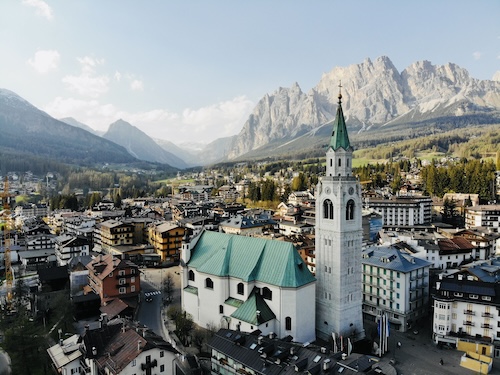 Cortina d'Ampezzo, Italy, in Summer
Cortina d'Ampezzo, Italy, in SummerAll The Winter Olympic Sports - the venues
The ice hockey tournaments will take place at two venues in Milan. The Mediolanum Forum in Assago, just outside Milan's city center, will host some matches, while the new state-of-the-art arena being built specifically for the Games will serve as the primary ice hockey venue. Both locations are easily accessible by Milan's efficient public transportation system, making it convenient for spectators to attend multiple events.
Figure skating and short-track speed skating will captivate audiences at the Mediolanum Forum as well. This multi-purpose arena, which regularly hosts concerts and sporting events, provides an intimate setting where you can really appreciate the artistry and athleticism of these graceful sports. The venue's excellent acoustics and sightlines ensure you won't miss a single jump, spin, or dramatic finish.
For speed skating enthusiasts, the action will unfold at the Oval Lingotto in Turin, about a two-hour drive or train ride from Milan. This venue was originally built for the 2006 Turin Olympics and has been maintained as a world-class facility. The oval's fast ice and perfect conditions have seen numerous world records broken over the years, so you might witness history in the making.
The next winter Olympic Games
Curling matches will take place at the Palazzetto dello Sport in Cortina d'Ampezzo. This venue offers a more intimate atmosphere where you can really appreciate the strategy and precision that makes curling such a fascinating sport to watch. The venue's location in the heart of the Dolomites provides a stunning backdrop that you'll remember long after the games end.
The bobsled, luge, and skeleton events will race down the historic Euganeo track in Cortina d'Ampezzo. This track has a rich Olympic history and provides some of the most thrilling moments of any Winter Games. The high-speed action and the courage of the athletes hurtling down the icy track at incredible speeds creates an absolutely electrifying atmosphere for spectators.
Alpine skiing events will be split between Cortina d'Ampezzo and Bormio. Cortina will host the women's events on the famous Olympia delle Tofane course, while Bormio's challenging Stelvio piste will see the men's downhill and super-G competitions. Both venues offer spectacular mountain views and some of the most technically demanding courses in the world.
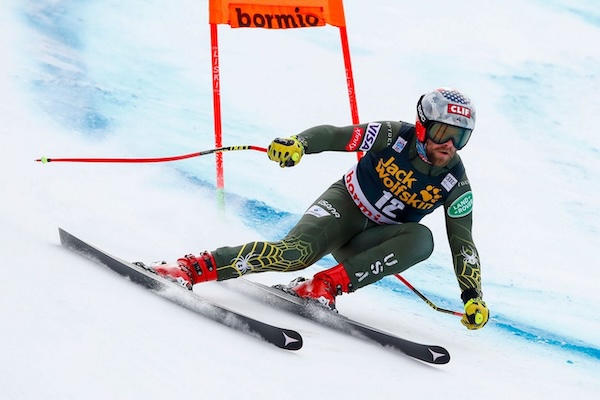 Racing at Bormio
Racing at BormioBormio, located in the Lombardy region about three hours from Milan, is a charming spa town known for its thermal baths and challenging ski slopes. The Stelvio downhill course is legendary among ski racing fans for its steep gradients and high speeds. If you're planning to attend these events, you'll want to book accommodation well in advance as this smaller town fills up quickly during major competitions.
Cross-country skiing and biathlon events will take place in Val di Fiemme, in the Trentino region. This area has hosted numerous international competitions and offers some of the most scenic Nordic skiing venues in the world. The rolling terrain and well-designed courses provide excellent viewing opportunities for spectators, and the surrounding alpine scenery is simply breathtaking.
Ski jumping will soar at the Trampolino del Bergisel in Innsbruck, Austria, making this one of the few international venues for the Games. This iconic hill, designed by renowned architect Zaha Hadid, offers spectacular views of the Austrian Alps and has been hosting world-class ski jumping competitions for decades. The venue's unique architecture and dramatic setting make it a must-visit location.
 The Bergisel at Innsbruck
The Bergisel at InnsbruckFreestyle skiing and snowboarding events will bring high-energy action to multiple venues. The halfpipe and slopestyle events will take place in Livigno, a duty-free shopping paradise nestled high in the Alps. Meanwhile, the ski cross and snowboard cross events will unfold in San Pellegrino, adding to the diverse geographic spread of these exciting Games.
The next winter Olympic Games
Now let's dive into all the winter olympic sports you'll have the chance to witness during your Italian adventure:
Alpine skiing is often considered the marquee sport of the Winter Olympics, featuring five disciplines: downhill, super-G, giant slalom, slalom, and the combined event. These races showcase pure speed, technical precision, and incredible courage as athletes navigate gates at breathtaking velocities down steep mountain slopes.
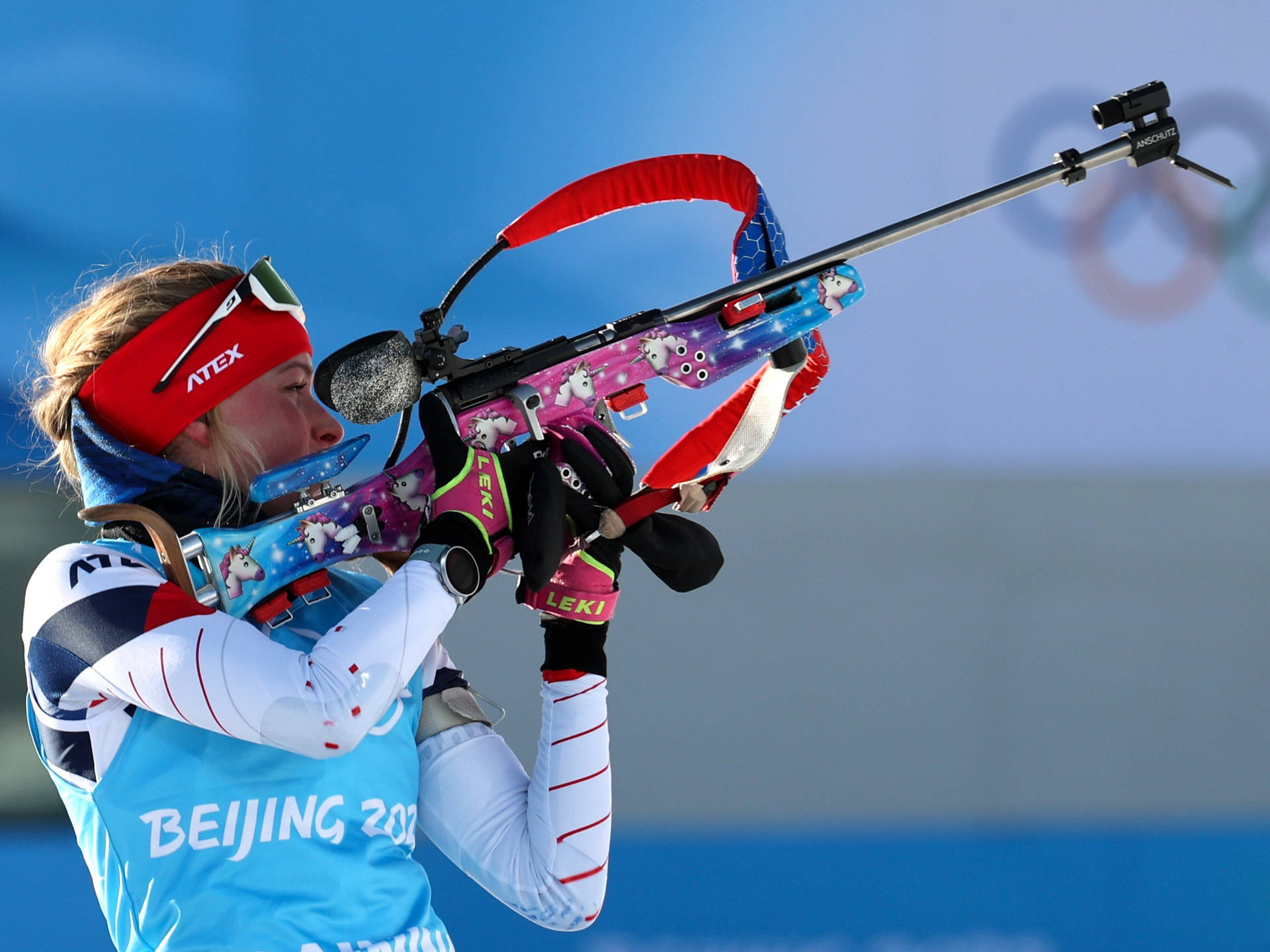 The shooting discipline in the Biathlon
The shooting discipline in the BiathlonBiathlon combines the endurance challenge of cross-country skiing with the precision of rifle shooting, creating one of the most demanding and exciting sports to watch. Athletes ski around loops of varying distances, stopping at shooting ranges to hit targets with their rifles. Missing targets results in penalty loops or added time, making every shot crucial and every race unpredictable until the very end.
Bobsled events feature teams of two or four athletes racing down an icy track in aerodynamic sleds at speeds exceeding 90 mph. The sport requires perfect timing, as the push start can make or break a run, followed by precise steering through the track's challenging curves. The thunderous sound of the sleds and the split-second timing make this one of the most thrilling spectator sports at the Games.
Cross-country skiing is the foundation of Nordic skiing, testing athletes' endurance, technique, and tactical awareness across various distances and formats. From sprint races that last just a few minutes to grueling distance events, these competitions showcase the pure essence of skiing as both transportation and sport, with athletes gliding across snow-covered landscapes with remarkable grace and power.
Curling, often called "chess on ice," is a strategic team sport where players slide granite stones across the ice toward a target area called the house. Team members use brooms to sweep the ice, influencing the stone's path and speed. The sport's combination of strategy, precision, and teamwork creates surprisingly tense and engaging competitions that have gained a devoted following worldwide.
Figure skating captivates audiences with its blend of athleticism and artistry, featuring individual men's and women's competitions, pairs skating, and ice dancing. Skaters perform technically demanding jumps, spins, and footwork sequences while interpreting music through movement. The sport's combination of athletic achievement and artistic expression makes it one of the most popular and emotionally engaging Olympic events.
Freestyle skiing encompasses several high-flying disciplines including moguls, aerials, ski cross, halfpipe, and slopestyle. These events showcase skiing's most creative and daring side, with athletes performing gravity-defying tricks and navigating challenging terrain features. The sport's emphasis on style, innovation, and risk-taking brings a youthful energy and excitement to the Olympic program.
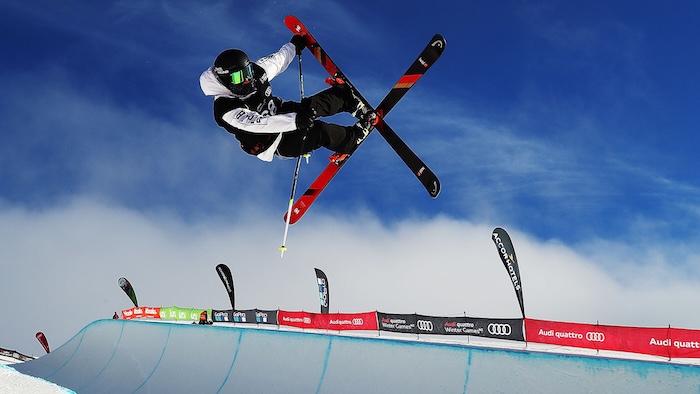 Freestyle ski jump
Freestyle ski jumpIce hockey brings fast-paced team action to the Olympic stage, with both men's and women's tournaments featuring the world's best players competing for their countries. The sport's combination of speed, skill, strategy, and physical play creates an electric atmosphere, especially when traditional rivals face off or when underdog teams make surprising runs toward the medals.
Luge is the fastest and most dangerous sliding sport, with athletes racing down the track on their backs at speeds that can exceed 90 mph. Unlike bobsled, luge athletes have minimal protection and limited steering ability, relying primarily on body positioning and subtle weight shifts to navigate the course. The sport's pure speed and the athletes' courage create some of the most heart-stopping moments of the Games.
Nordic combined tests athletes in both ski jumping and cross-country skiing, earning it the nickname "the most difficult sport in the world." Competitors first participate in ski jumping, with their scores determining their starting positions for the cross-country race. The athlete who crosses the finish line first wins, making for dramatic come-from-behind victories and strategic racing.
The next winter Olympic Games
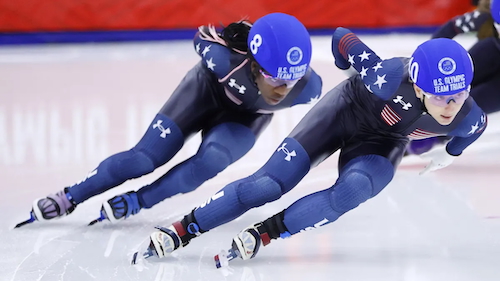 Short track speed skating
Short track speed skatingShort track speed skating brings high-speed pack racing to a compact oval, creating some of the most unpredictable and exciting competitions at the Olympics. Unlike long track speed skating, athletes race directly against each other rather than against the clock, leading to tactical battles, dramatic passes, and sometimes spectacular crashes that can change the outcome in an instant.
Skeleton athletes hurtle down the bobsled track headfirst on a small sled, reaching incredible speeds with nothing but a helmet between them and the ice. This sport requires tremendous courage and precise technique, as athletes must perfectly time their running start and then steer using only subtle body movements while lying face-down on their sled.
Ski jumping combines speed, technique, and nerves of steel as athletes launch themselves from large hills, soaring through the air for distances that can exceed 100 meters. Judges score both the distance achieved and the style of the jump, including the flight position and landing. The sport's combination of individual achievement and the constant battle against gravity creates truly memorable Olympic moments.
Snowboarding has brought a fresh, youthful energy to the Winter Olympics since its debut in 1998. The sport includes halfpipe, slopestyle, snowboard cross, parallel giant slalom, and parallel slalom events. Each discipline showcases different aspects of snowboarding, from the aerial artistry of halfpipe to the head-to-head racing excitement of snowboard cross.
Speed skating on the long track is often called the "Formula One of winter sports," with athletes racing against the clock on a 400-meter oval. The sport features distances from the explosive 500-meter sprint to the tactical 10,000-meter marathon, with each race requiring different strategies and physical attributes. The pursuit events add tactical elements as athletes can see their competitors and adjust their tactics accordingly.
When planning your visit to witness the next winter Olympic Games, consider that February in northern Italy offers crisp, clear days perfect for outdoor events and cozy evenings perfect for exploring local restaurants and cultural attractions. Milan's efficient transportation system, including metros, buses, and trains, makes it easy to navigate between venues and explore the city's many attractions between events.
The next winter Olympic Games
Accommodation options range from luxury hotels in Milan's city center to charming mountain lodges in Cortina d'Ampezzo and the surrounding alpine towns. Booking early is essential, as demand will be extremely high during the Games. Consider staying in Milan as your base if you want to attend multiple events, as the city offers the most accommodation options and the best transportation connections to other venues.
A list of winter Olympic events wouldn't be complete without mentioning the cultural program that accompanies the Games. Italy's rich cultural heritage means you'll have opportunities to explore world-class museums, historic sites, and architectural marvels between sporting events. From Milan's La Scala opera house to the medieval castles dotting the Dolomites, your Olympic journey can be as much about cultural discovery as athletic achievement.
The 2026 Milan-Cortina Winter Olympics promise to deliver an unforgettable experience that combines world-class athletic competition with Italy's unmatched hospitality, cuisine, and cultural richness. Whether you're a die-hard sports fan or someone looking for a unique travel experience, these Games offer something special for everyone. Start planning your Italian Olympic adventure now, and prepare to be part of an event that will create memories to last a lifetime!






